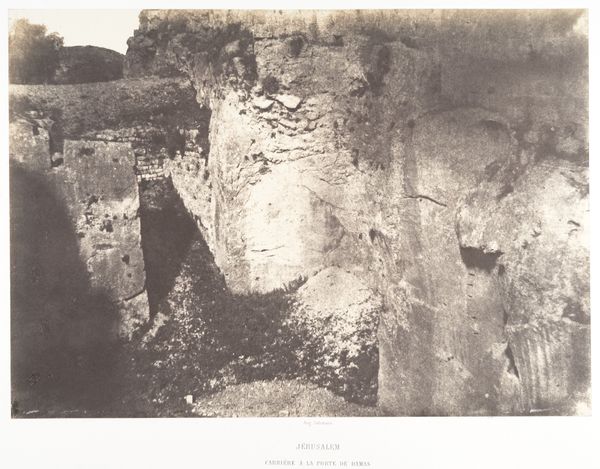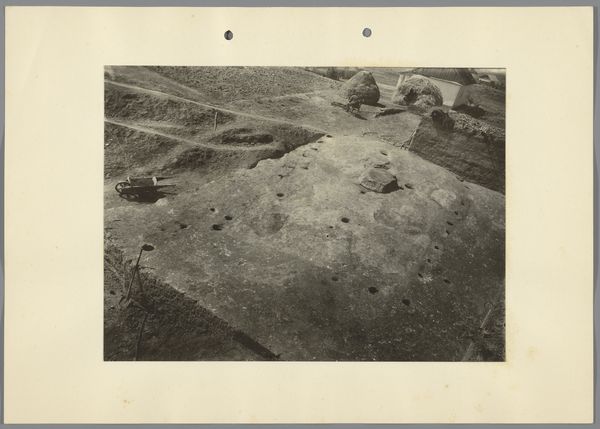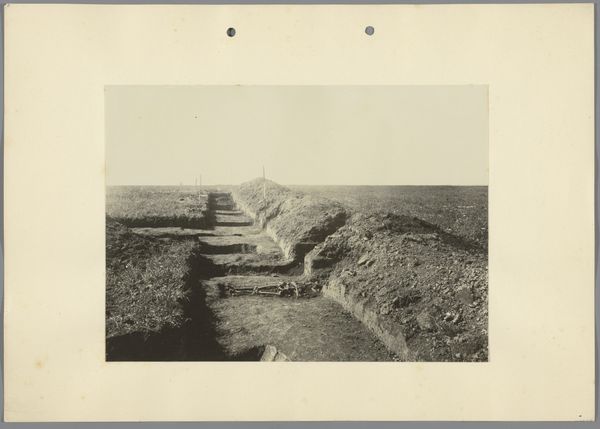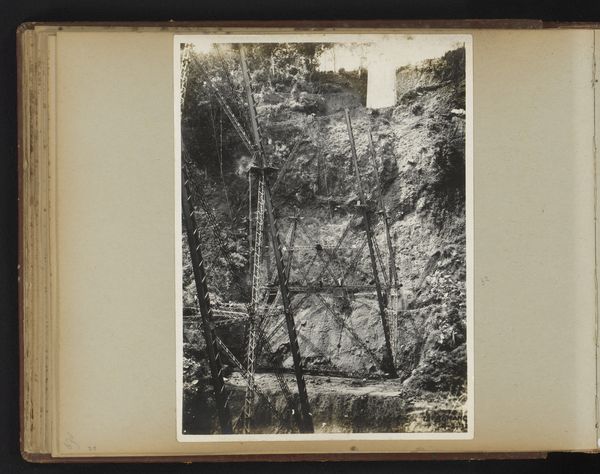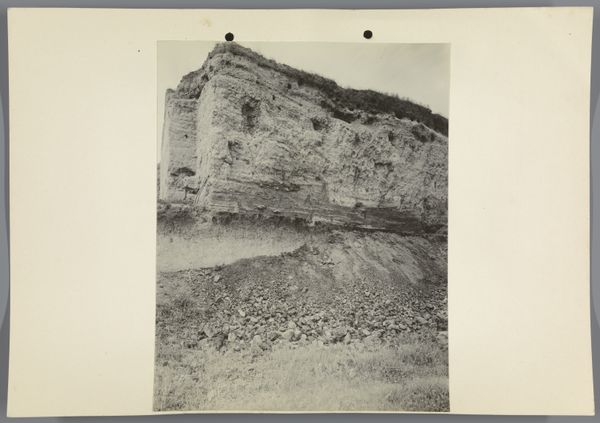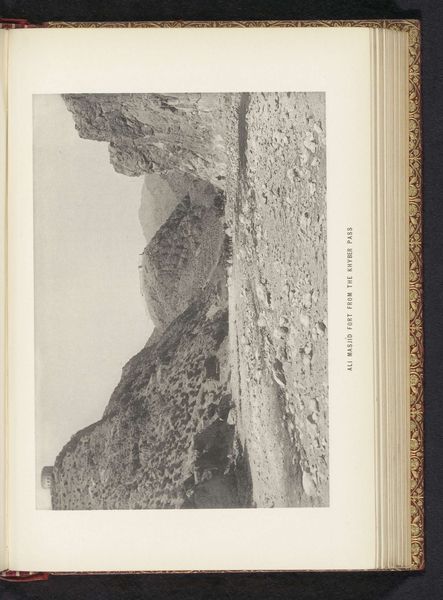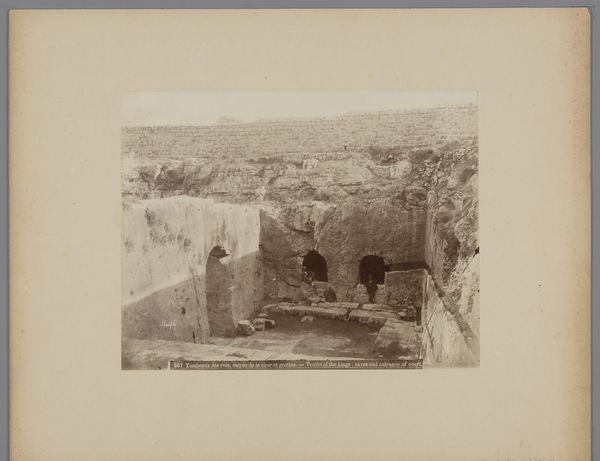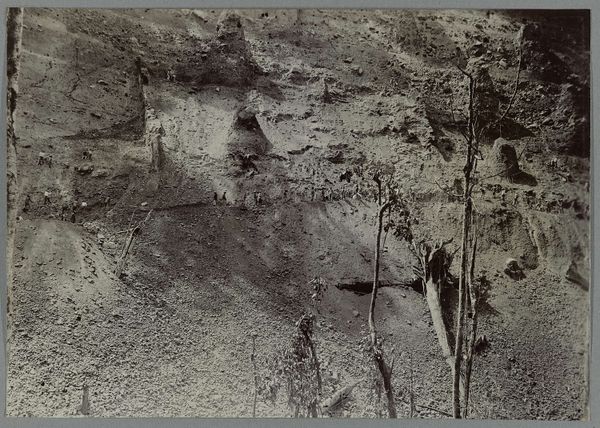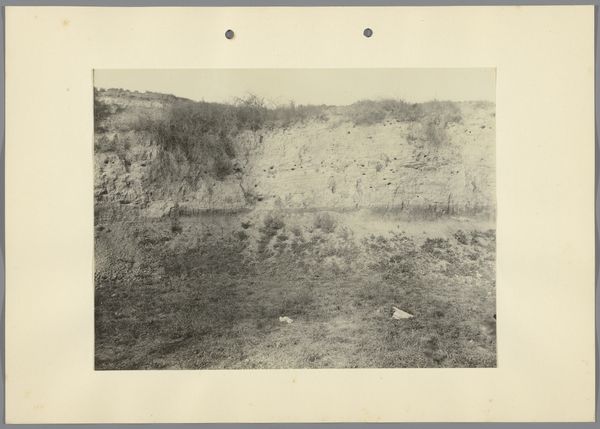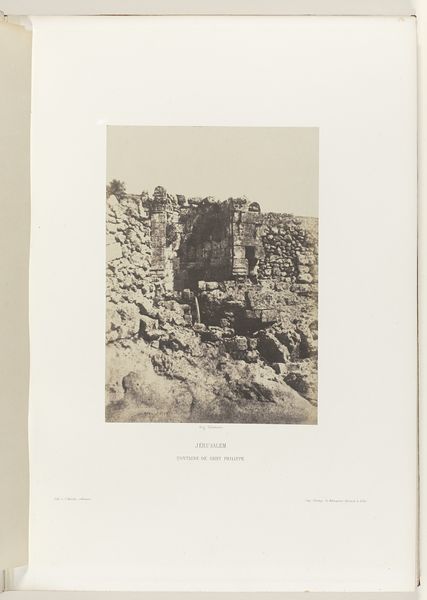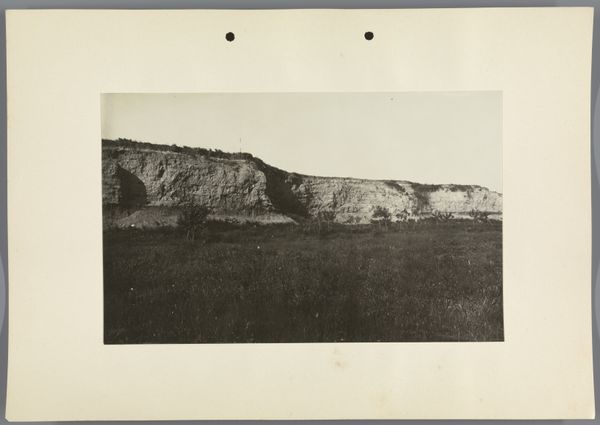
photography, gelatin-silver-print
#
landscape
#
photography
#
gelatin-silver-print
#
realism
Dimensions: height 219 mm, width 170 mm, height 240 mm, width 340 mm
Copyright: Rijks Museum: Open Domain
Curator: Welcome! We’re standing before a gelatin-silver print titled "Archeologische opgravingen in Hongarije," or "Archaeological Excavations in Hungary," captured in 1928. Editor: You know, at first glance, it looks like an alien landscape. Bleak, lunar, but somehow... comforting? Like returning to the very beginning, stripped bare. Curator: Fascinating. The image indeed presents a section of excavated earth. This realistic depiction offers insights into early archaeological practices. Consider how the photograph flattens the scene, obscuring depth. Editor: Depth is irrelevant here, don’t you think? It is a raw look, almost geological, highlighting texture and the stratification of time. All those layers – human history imprinted in dirt. Makes you wonder about the secrets those caverns still hold. Curator: The photograph documents an actual dig site in Hungary. Photography served an important function then. These visual records were critical for disseminating information to academic communities and the public. The composition here is really more objective observation. Editor: Yes, true, there's objectivity… But I get something more. Those dark holes hint at absence, at stories vanished. Even in a scientific image, absence can feel poetic, can’t it? Like looking at death itself. The negative space carries as much meaning as any shard of pottery they pulled out of there. Curator: Indeed. Furthermore, its style situates this artwork within the Realist movement, that gained a stronghold in photography from the late 19th-century onwards. It’s a clear, almost unembellished record of what was there. The "as-is" aesthetic was seen to lend objectivity and promote visual transparency, both ideal concepts for use in research, social projects, and politics. Editor: Funny how “unembellished” can still stir the soul, you know? Something about the rawness gets under your skin, reminds you we are all just… temporary indentations in the mud. It almost feels like a memento mori of civilization itself. Curator: Well said. And while photography has come so far as an artistic medium since then, early works such as these help us appreciate how we understand the power and role of objective imagery in research today. Editor: Absolutely. This photo proves even what feels like fact can whisper like fiction, if you're willing to listen.
Comments
No comments
Be the first to comment and join the conversation on the ultimate creative platform.

